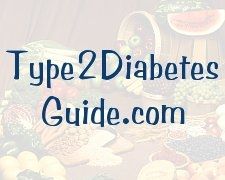Normal Postprandial Blood Sugar Levels - Why It Matters
In diabetics, there is an increased risk of vascular disease, or problems with blood vessels or blockages in the arteries. Keeping blood sugar levels as close to normal as possible, as much of the time as possible, helps to minimize the risk of this diabetes-related complication. Testing fasting blood glucose only takes a "snapshot" of how well blood sugar is controlled in that particular situation; it doesn't take into account how tightly controlled sugar levels are throughout the rest of the day.
The A1C Test
An A1C test is an indicator of your average blood sugar levels over the last 3 months. In diabetics, the recommended target level is often set at 7% (6% in non-diabetics) - but many people struggle to stay under this target. Taking steps to control postprandial blood sugar levels and keep them within normal range helps to also lower A1C. Tightly-controlled blood sugar that stays as close to normal range as possible helps to prevent or delay the onset of diabetes-related complications.
Factors That Affect Blood Sugar
Many different things can affect blood sugar levels. These includes the amount you ate for the meal, whether or not you exercised, how long you exercised, stress, and illness. Some medications and health conditions can also affect blood sugar. Any pattern of high blood glucose readings or significantly abnormal readings should be discussed with your doctor and a diabetes educator. Dietary and lifestyle changes, or adjustments to medication, can help to prevent postprandial hyperglycemia (high blood sugar).
On the other hand, some people experience reactive hypoglycemia, which is low blood sugar after eating, typically occurring within 3 hours. Symptoms of hypoglycemia include weakness, dizziness, confusion, and sudden hunger. A pattern of low blood sugar after eating should be discussed with your doctor. Often times a change to your diet or meal planning can minimize episodes of reactive hypoglycemia.
It is helpful to record your glucose readings in a log book.
Make notes next to any abnormal or unusual readings, indicating what may have
caused them. This log can be an invaluable tool to spotting trends or patterns.
Bring it with you when you go to see your doctor or diabetes educator.
Even though typical bloodwork doesn't include checking for normal
postprandial blood sugar levels, it can be done at home with a diabetes
blood glucose monitor.
It may take some time before you figure out how to manage postprandial blood glucose.
Your doctor will be able to help you figure out how often you should check and what
adjustments (if any) need to be made.
What Causes Diabetes?
Insulin Resistance
Signs of Diabetes
Hypoglycemia
Hyperglycemia
Glycemic Index
Diabetic Recipes
Feline Diabetes
Diabetes Diet Sheet
How to Control Diabetes Without Medication
What Foods Have a Low Glycemic Index?
Conversion Chart for Blood Sugar Levels




